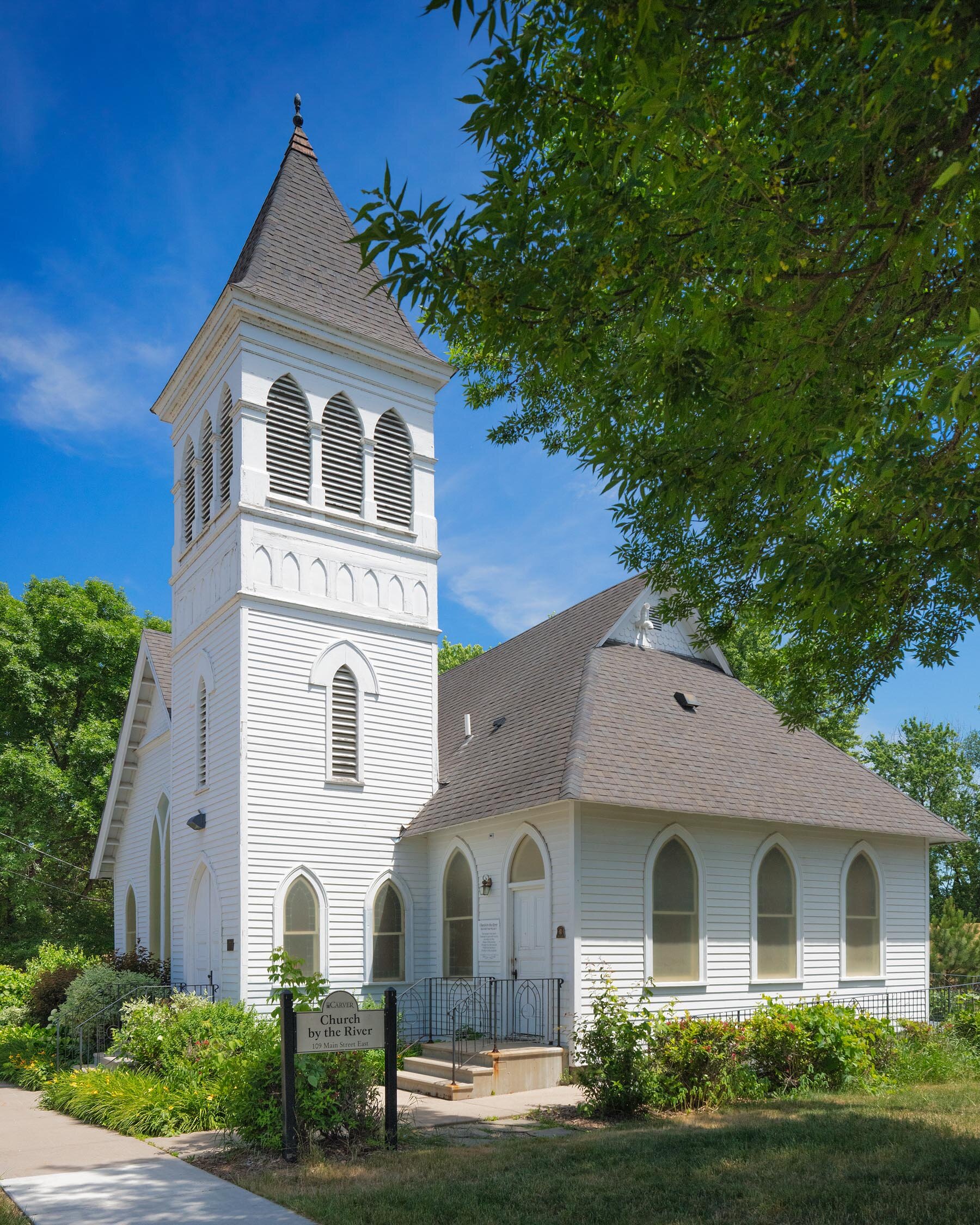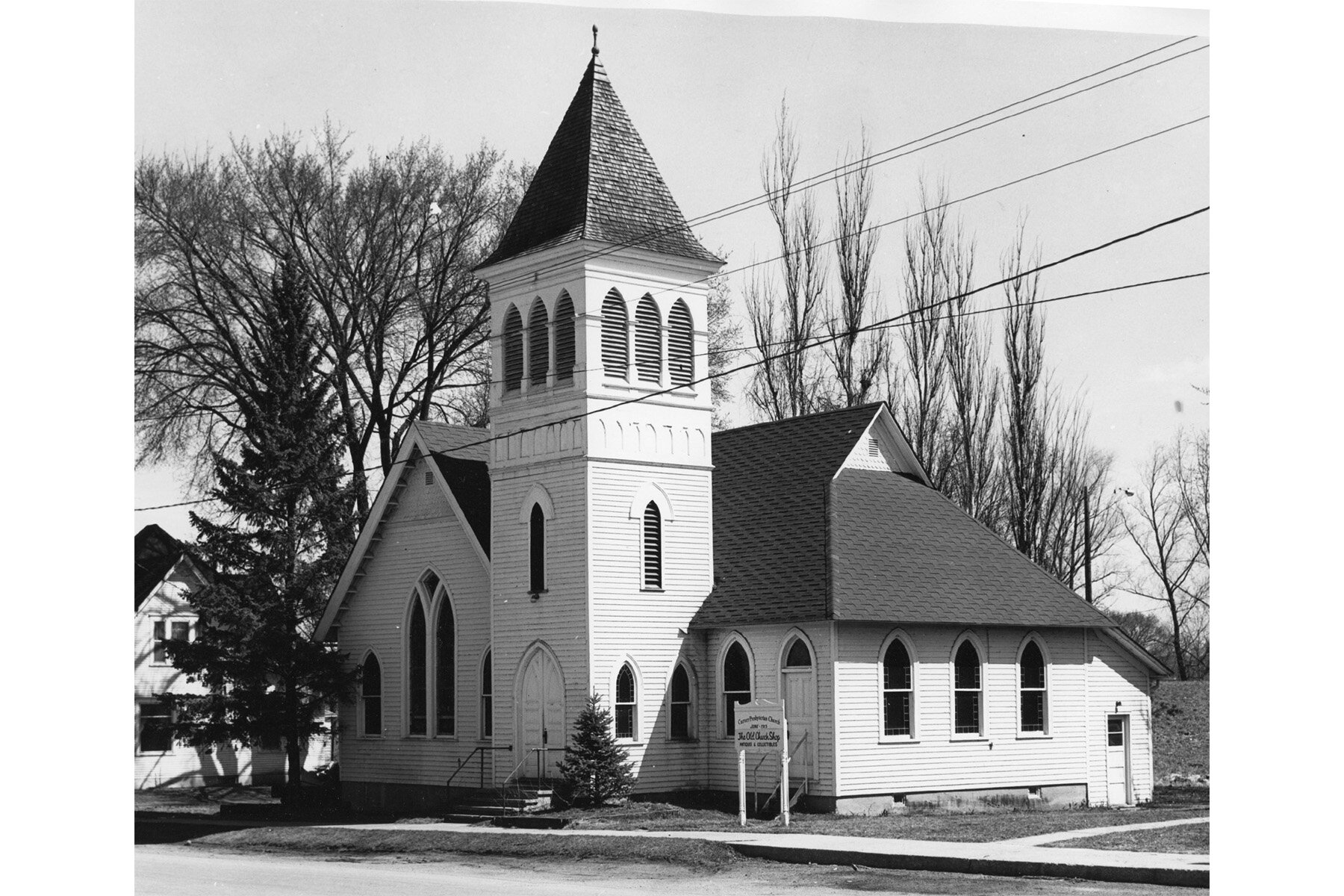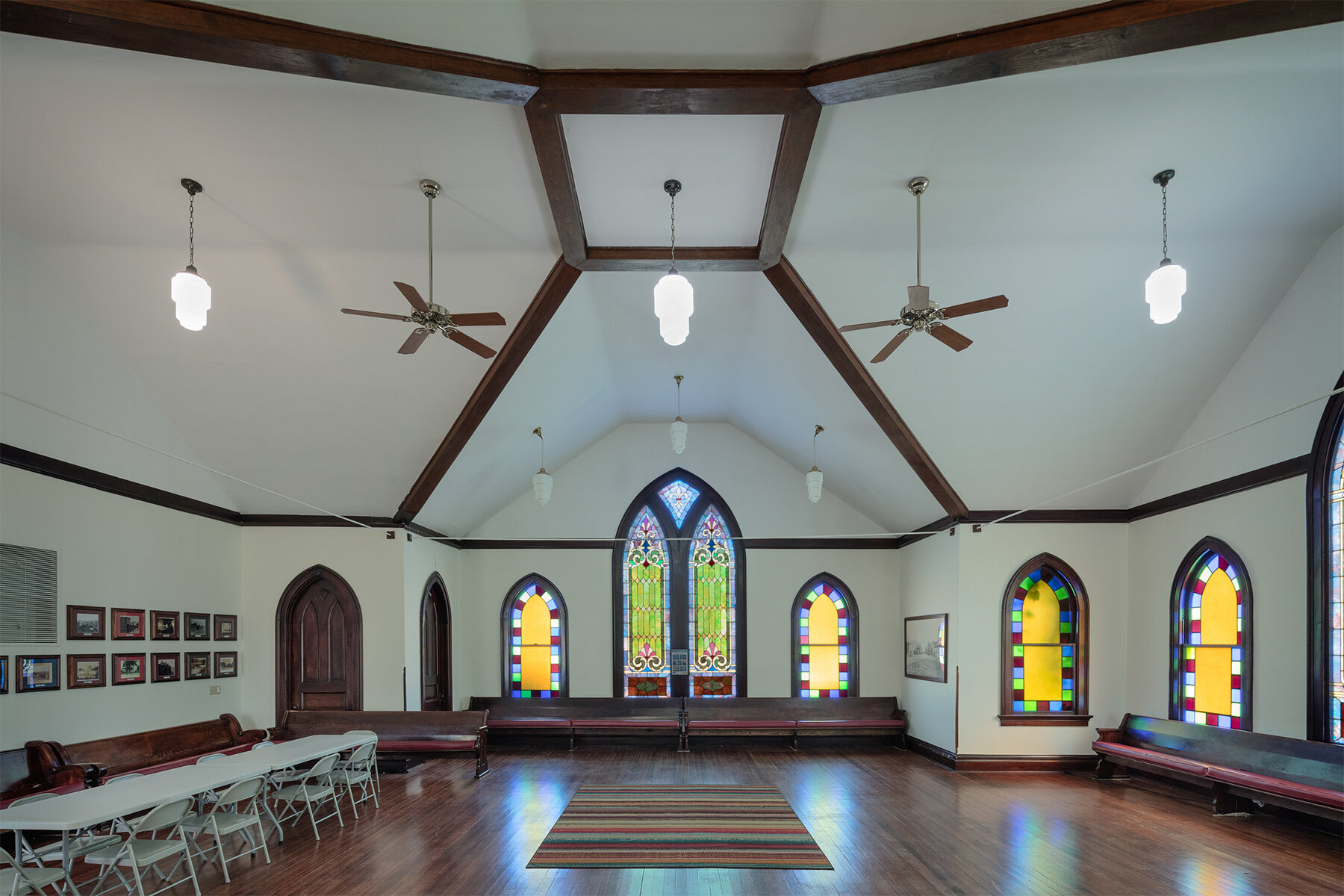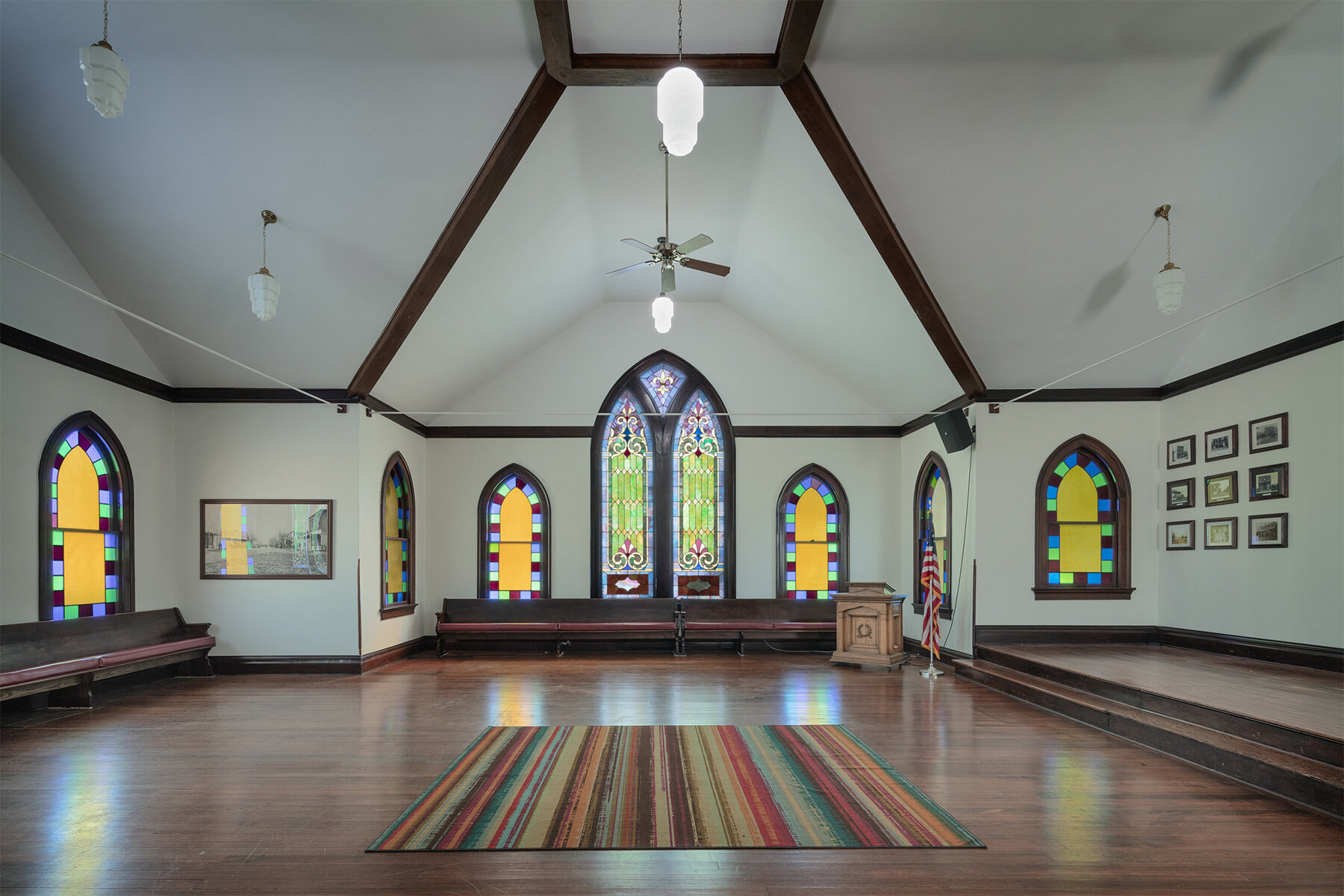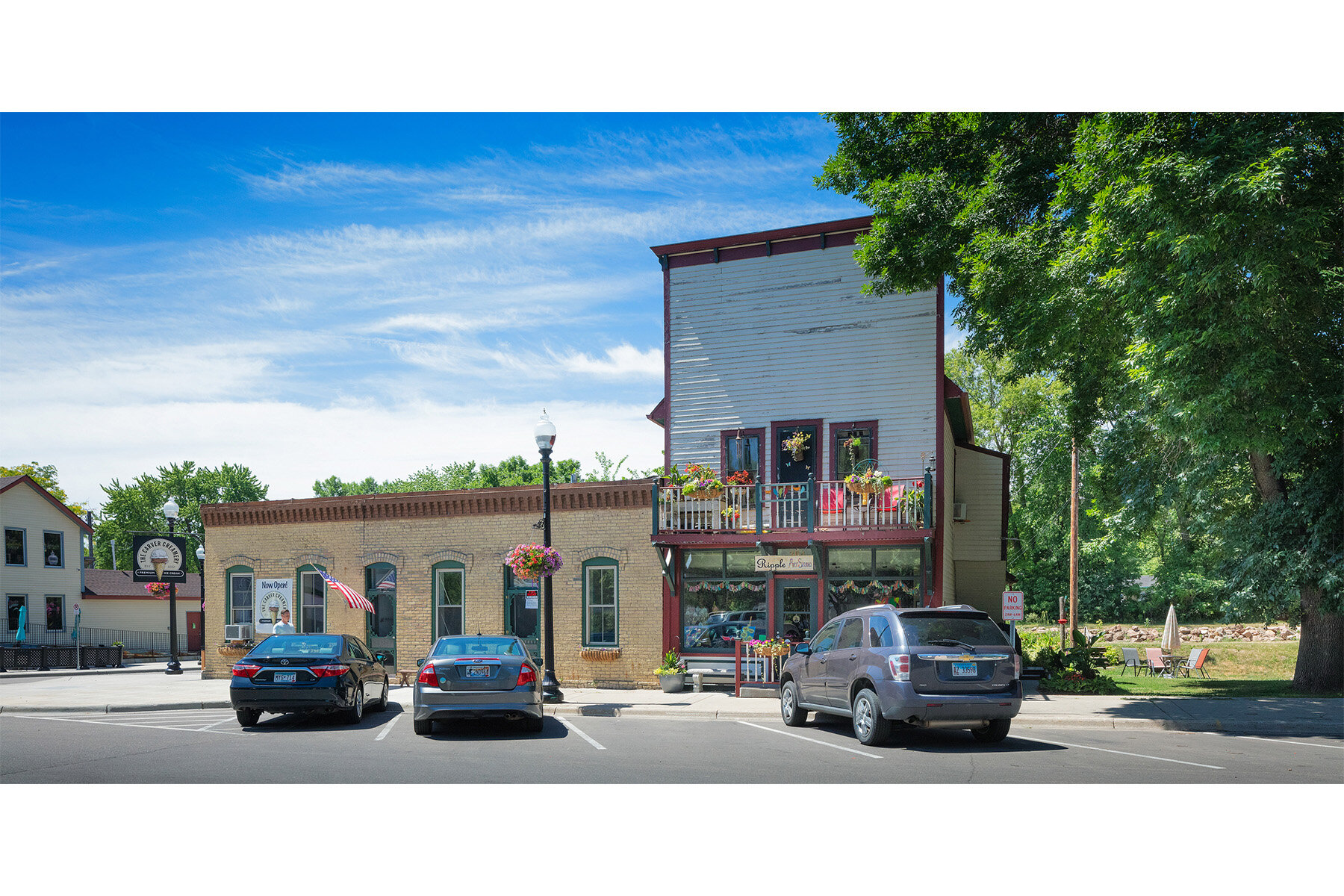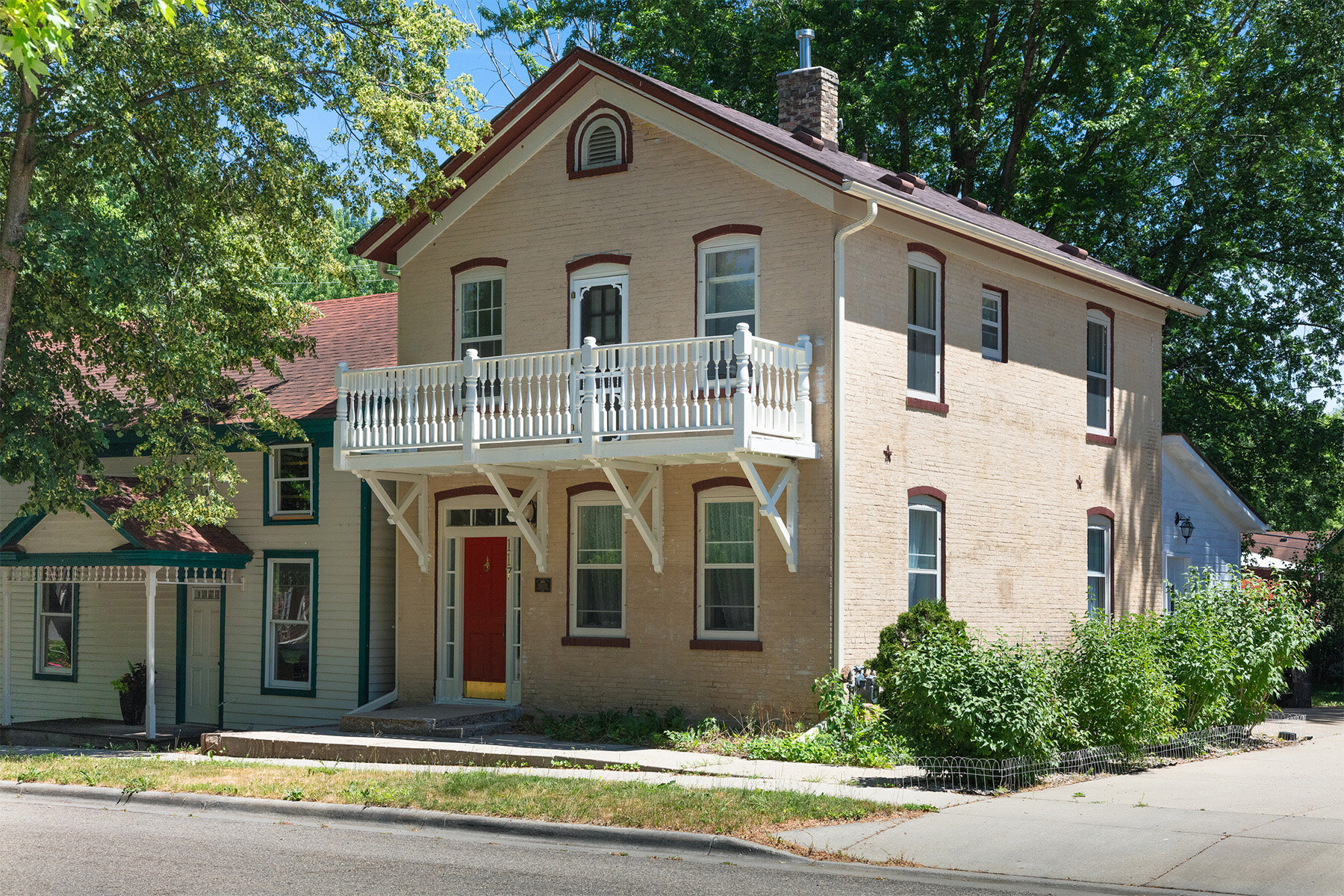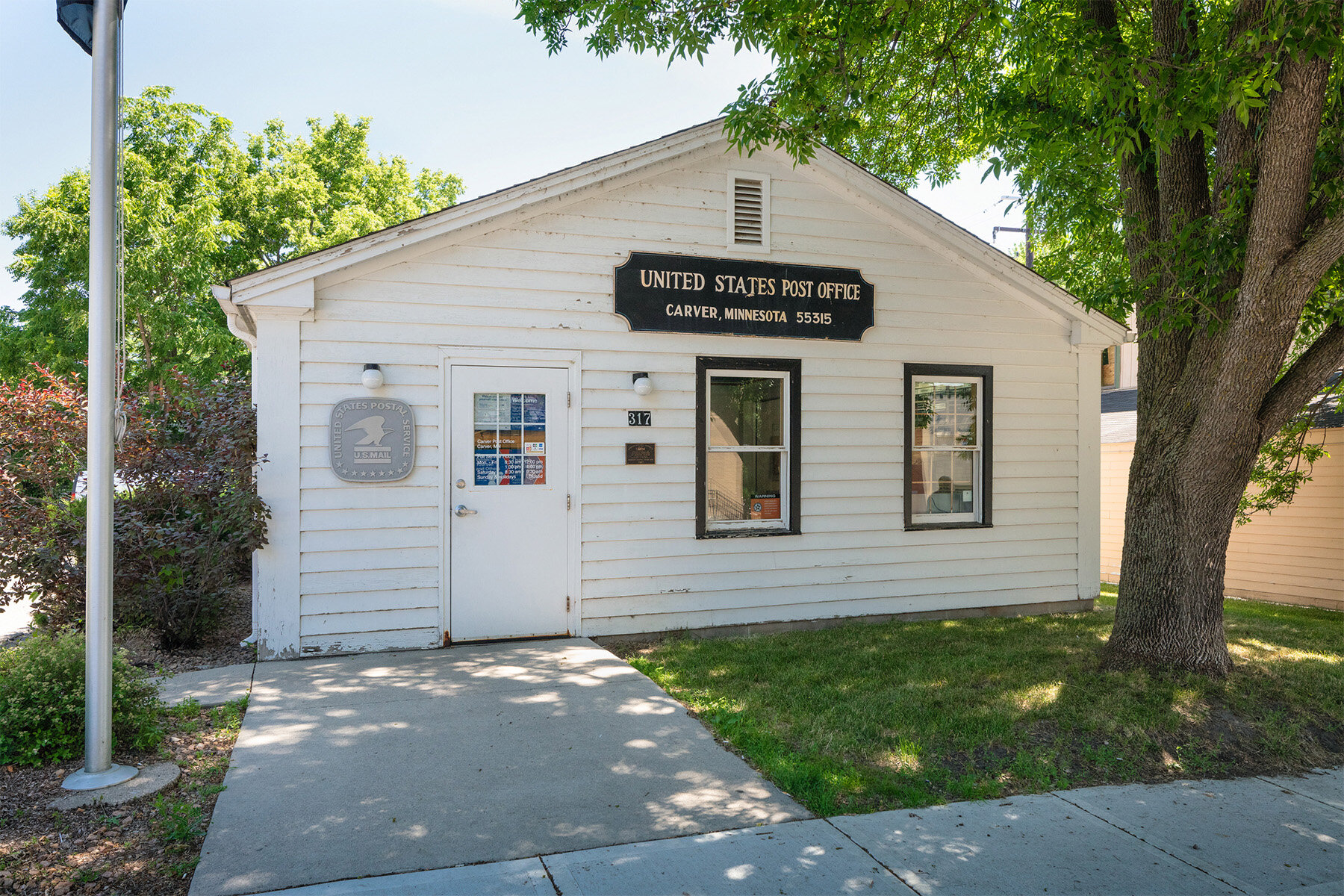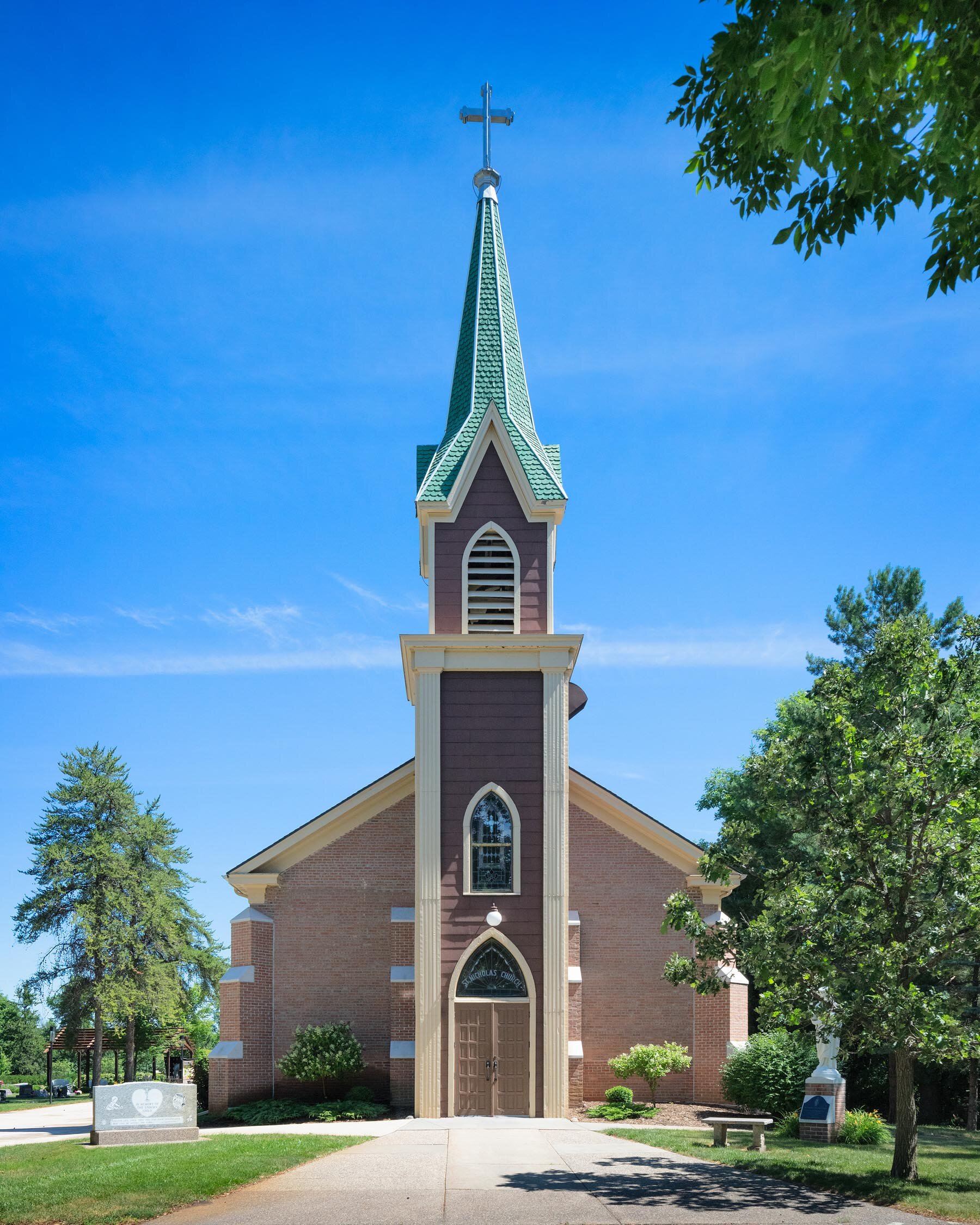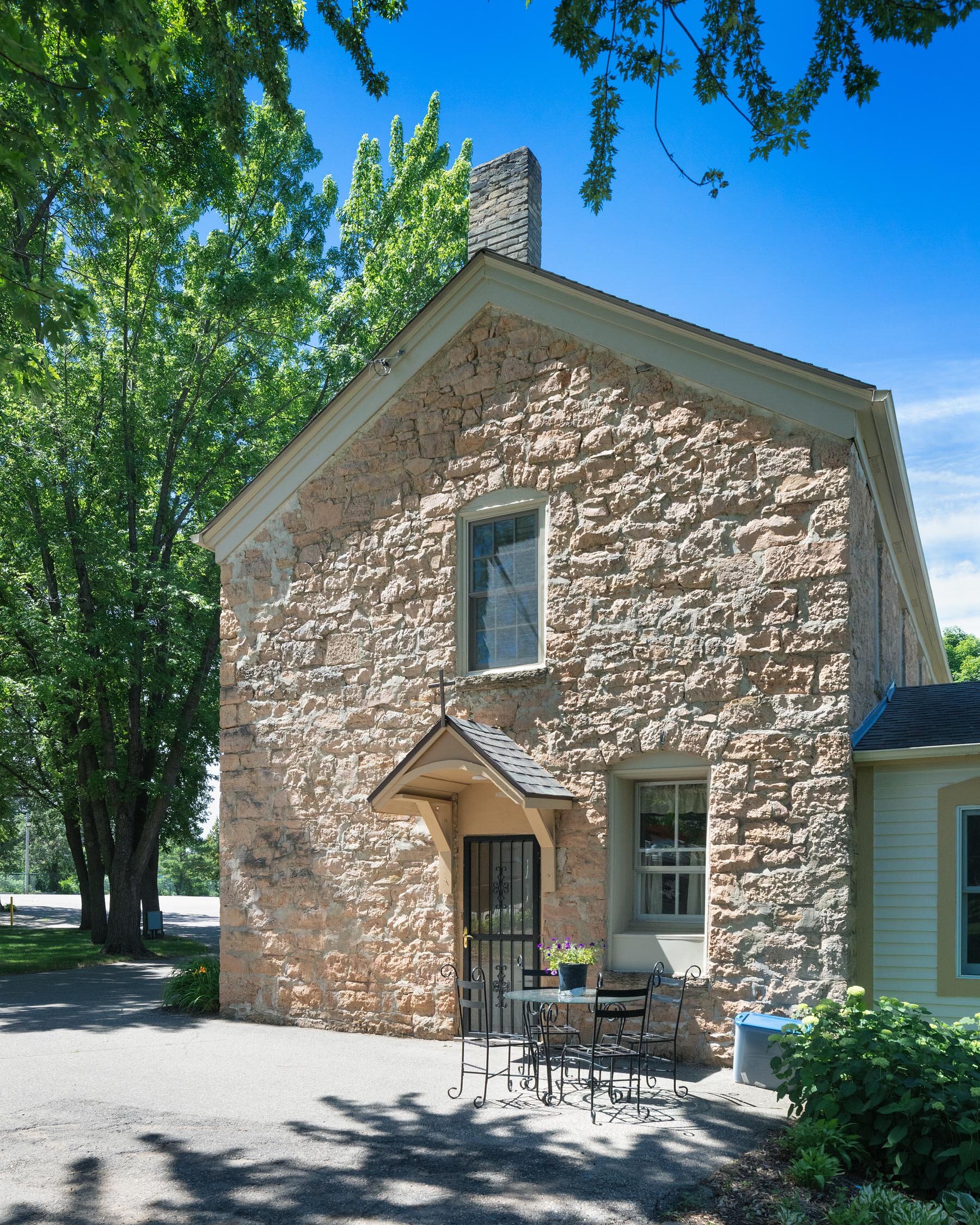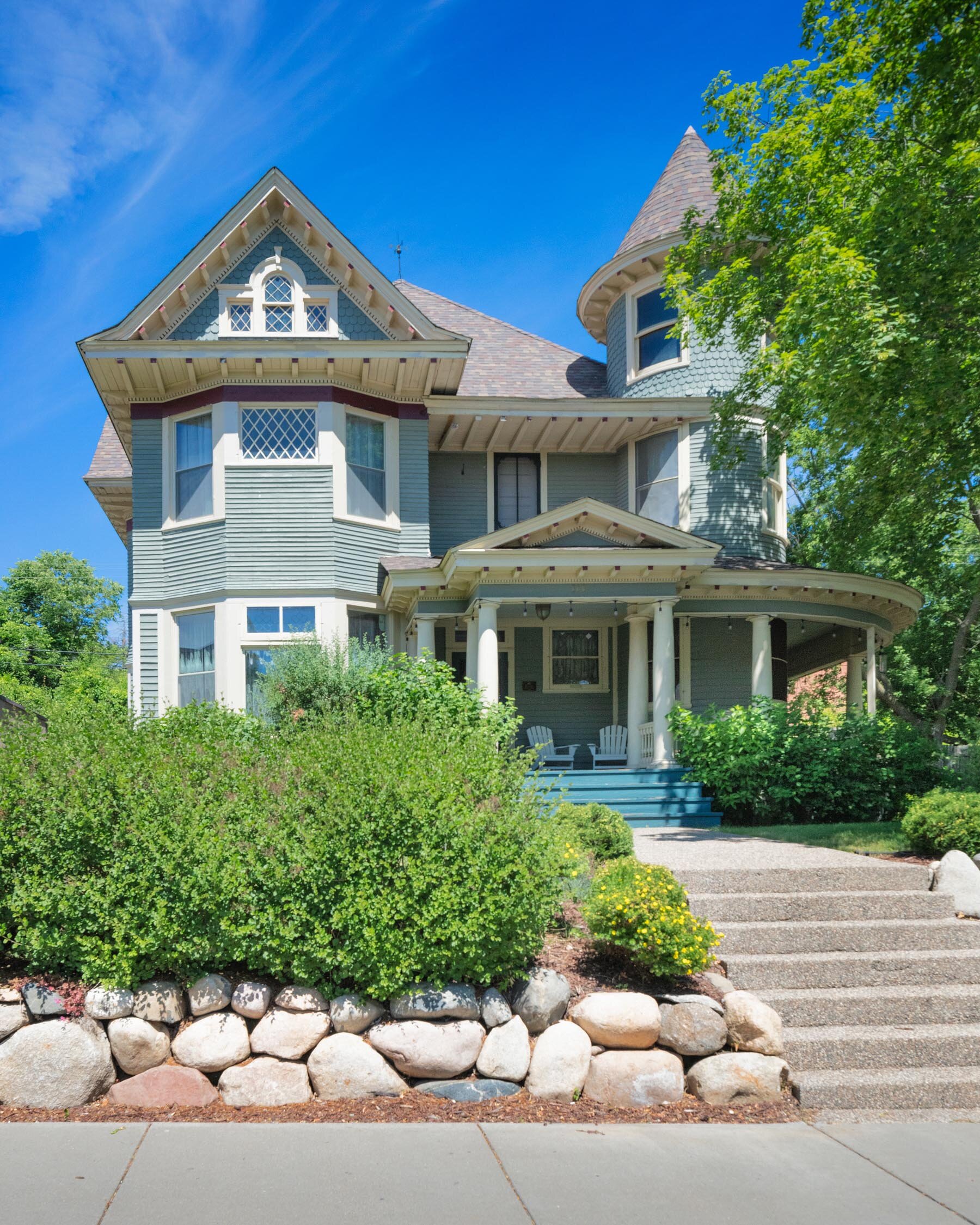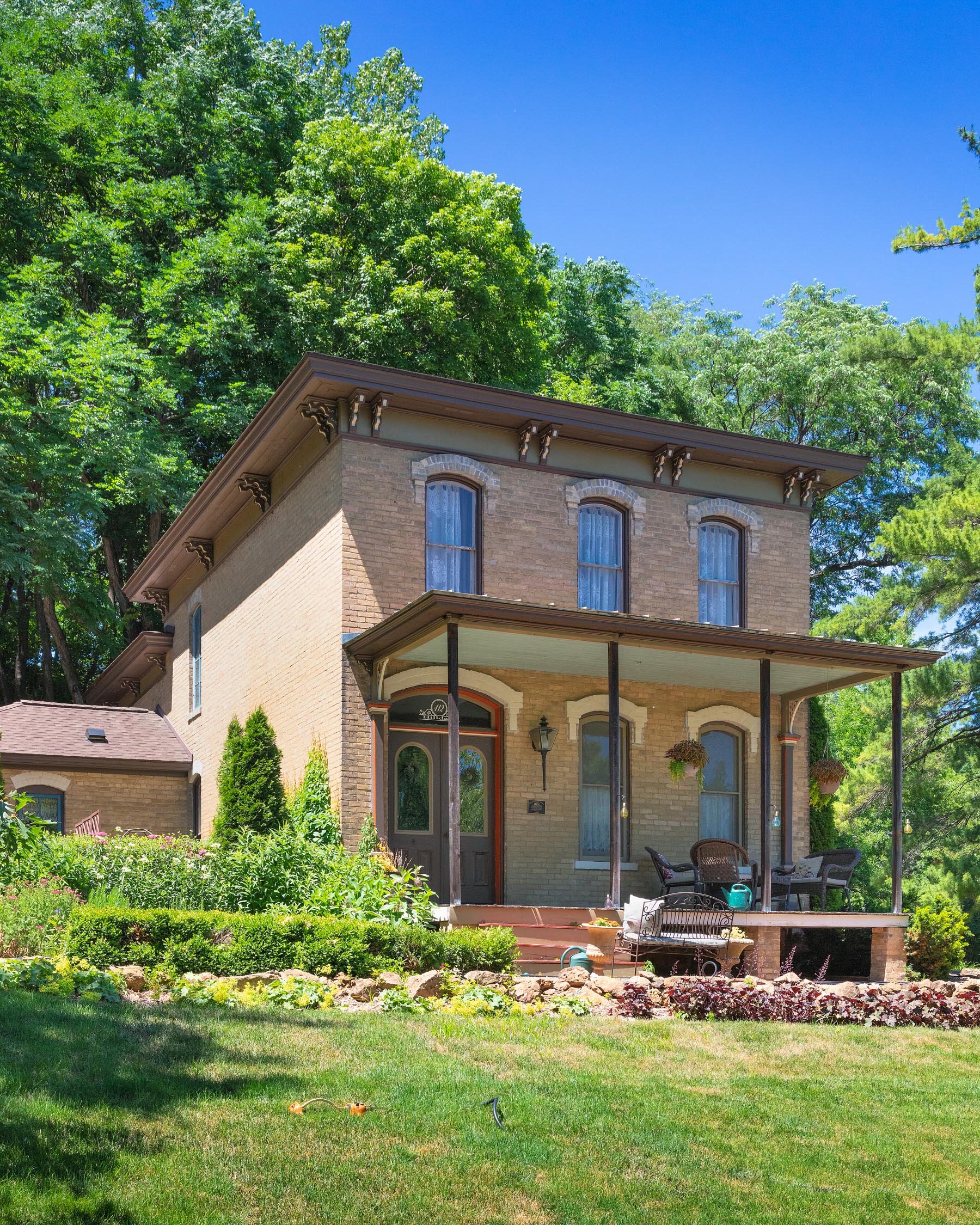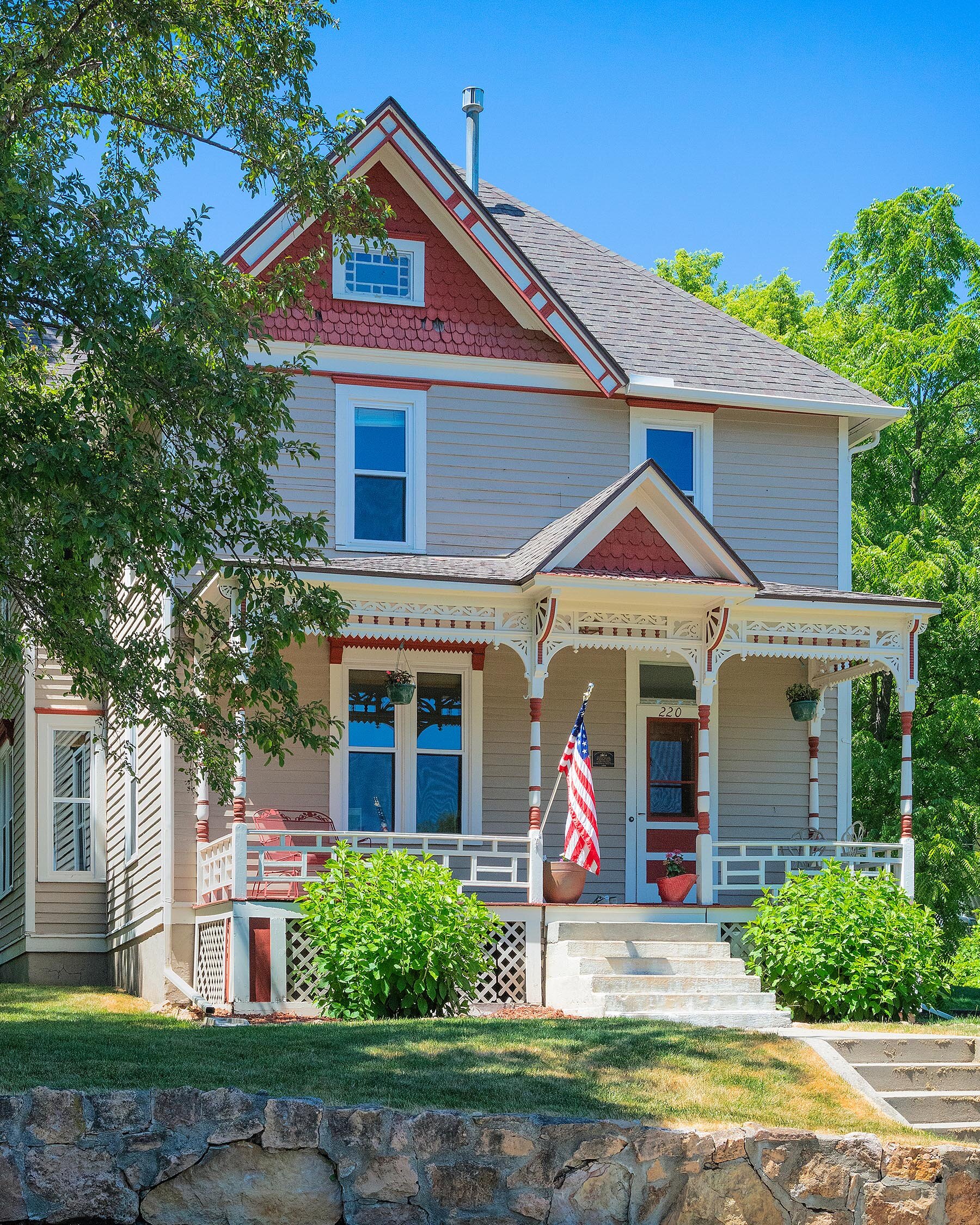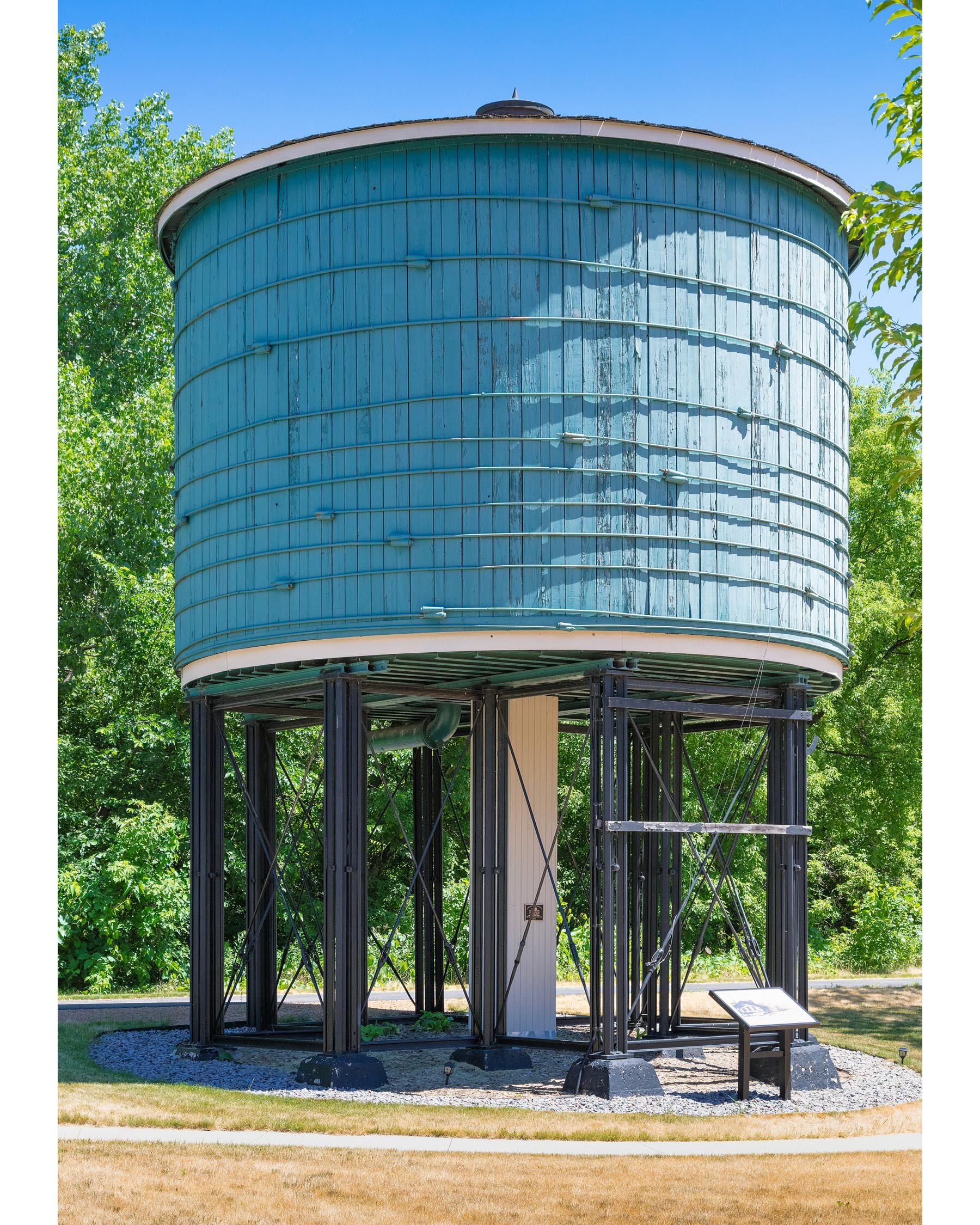Historic Carver on the Minnesota River
Text by Bill Beyer, FAIA Emeritus, photos by Pete Sieger | July 1, 2021
The 1913 Church by the River, now used as a venue for small community events. Photo by Peter J. Sieger.
HISTORY HIGHLIGHT
In 1857, a year before Minnesota became a state, steamboats began daily round trips on the Minnesota River between the recently platted town of Carver and St. Paul, 32 miles downstream. Two decades later, railroads surged, steamboats ebbed, and Carver began to be slowly upstaged by neighboring Chaska.
But the city’s historic legacy survived, nurtured by its citizens. In 1980, the town center became one of the first, and largest, historic districts in Minnesota to be placed on the National Register of Historic Places, with 87 buildings and four structures of significance built between 1850 and 1925.
Church by the River features a square sanctuary with original entry through the base of the bell tower, plus boldly colored, Gothic stained-glass windows (three views); 300 Broadway Street, circa 1880 (two views); Edward Goetze House, 1867; U.S. Post Office. Historical photo courtesy of the Carver County Historical Society. Color photos by Peter J. Sieger.
The congregation of Carver’s Presbyterian Church by the River formed in 1899 and erected its church in 1913. Membership declined in the 1950s, and the building was damaged in Minnesota’s historic 1965 flood, which rolled over a 1953 dike and soaked dozens of buildings up to their second stories.
The church was acquired by a nonprofit in 1971 and eventually donated to the city. Through the efforts of the Carver Lions Club and countless volunteers, it was restored and used for a time as the city hall. The city currently rents the space for small community events. In 2006, the restoration project received a Community Effort Award from the Preservation Alliance of Minnesota (now Rethos). Mayor Courtney Johnson tells ENTER that Carver “has a long history of pulling together as a community and getting things done.”
The white clapboard gem by the river complements the many commercial and residential buildings built from creamy Chaska brick (or from a rosier-hued Carver variety) mined from local clays and baked in wood-fired kilns. By 1900, 30 percent of all brick used in Minnesota was made in Chaska.
St. Nicholas Catholic Church, 1868 (bell tower added in 1880); Rectory, St. Nicholas Catholic Church, 1868; John Funk Jr. House, 1902; Hilldale, circa 1870; J.A. and Dorothy Skoog House, 1896; Carver Water Tower, 1901, still in use as reserve water storage for the Carver Fire Department. Photos by Peter J. Sieger.
In 2007, the federal Advisory Council on Historic Preservation recognized Historic Carver as Minnesota’s eighth Preserve America Community, a designation for towns that “celebrate their heritage; use their historic assets for economic development and community revitalization; and encourage people to experience and appreciate local historic resources through education and heritage tourism.”
Historic District Walking Tour brochures are available for visitors who want to reimagine steamboat time while biking or walking along the levee—and soak up some Minnesota history through informative signage and beautiful architecture.

